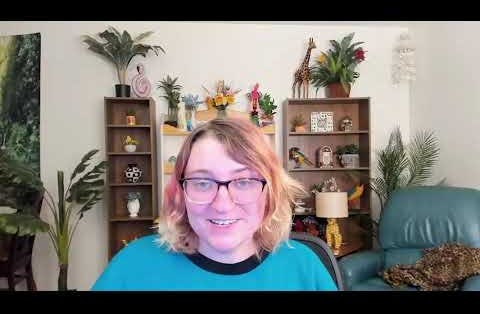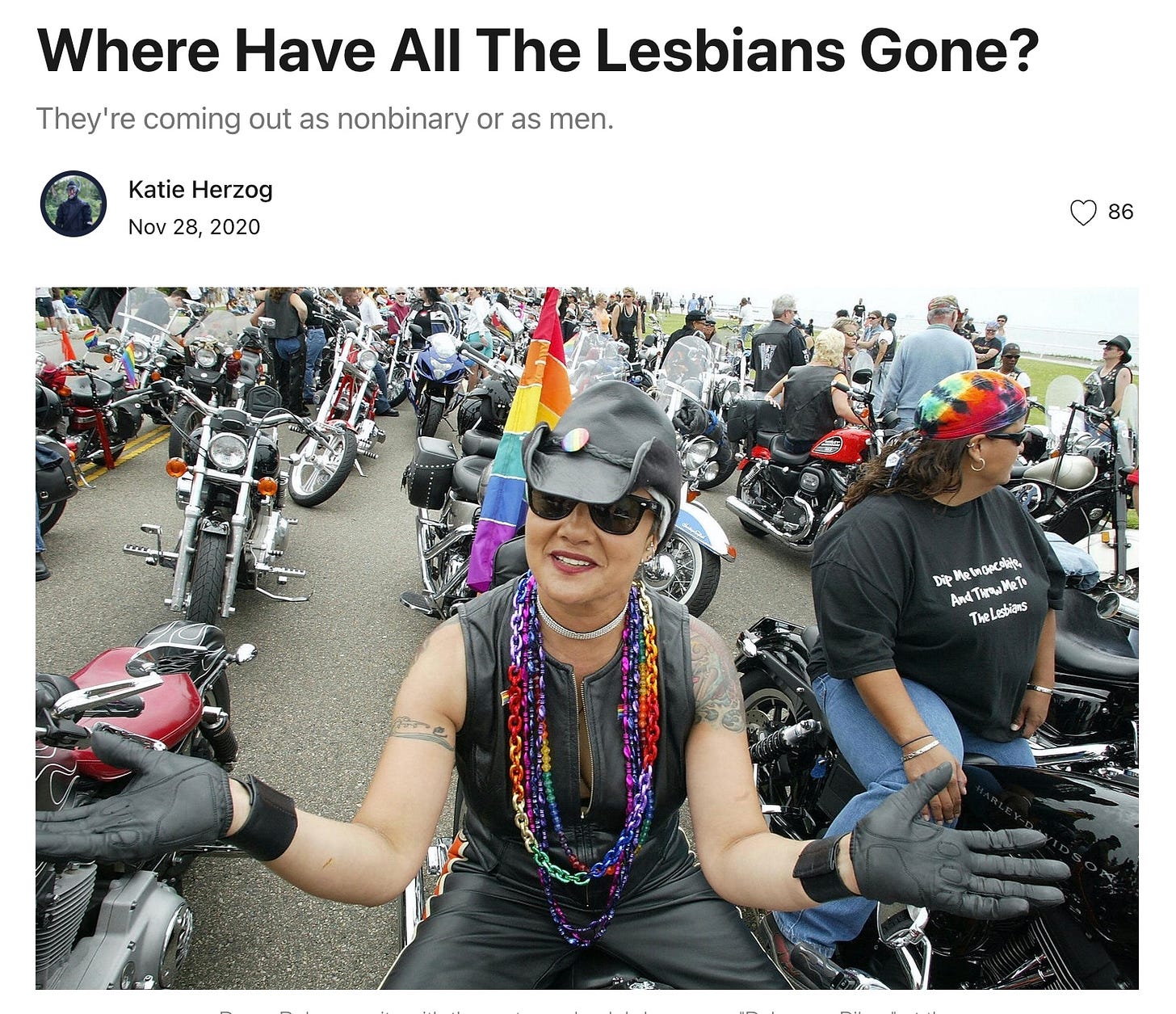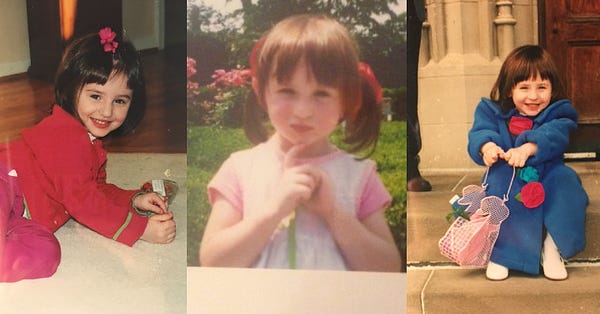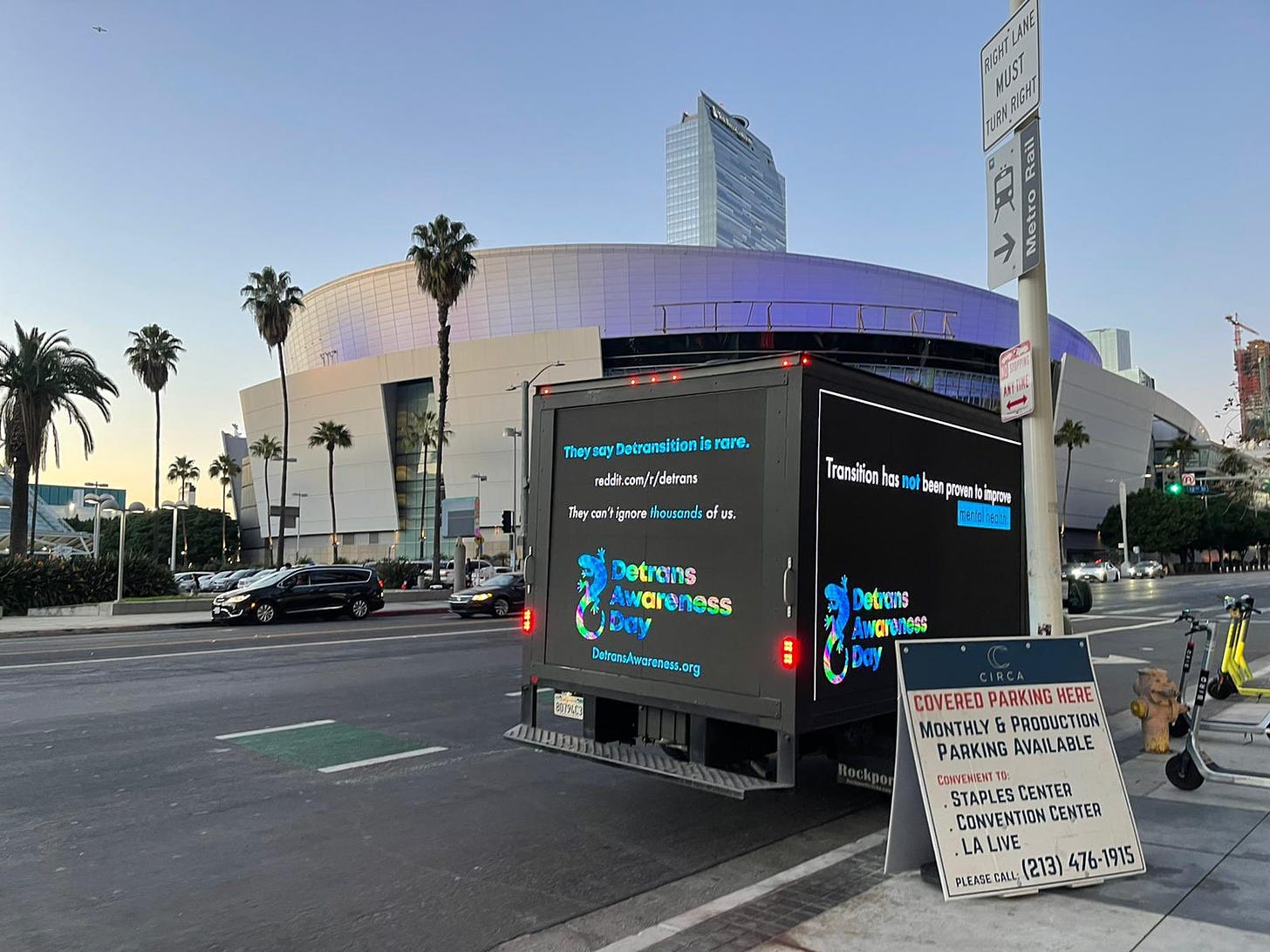This post brings together edited extracts from the historic detransitioners’ forum hosted on 12 March 2022 by the international parents’ group Genspect and its founder Stella O’Malley, a therapist in Ireland. The presentations by detransitioners were rich and nuanced, with insights that will be new to many people, especially to those who have only heard the activist claim that detransition is vanishingly rare.
I will post further edited extracts from the forum soon. Today’s post deals with some of the problems and issues thought to be obscured by fixation on a trans “gender identity”.
The Genspect webinar was sold out, and the Twitter hashtag #DetransAwarenessDay was trending in the US, Canada and in the UK. For details on video from the forum, sign up for Genspect’s mailing service. Genspect, which went public in June 2021 to speak for the often silenced parents of gender-questioning young people, represents 18 parent organisations in 16 different countries.
Sinéad, 31, detransitioner, Scotland
“Detransition is not just ending the medical process, it's also returning to a previous identity. Everyone thinks about the hormones and the surgeries. That's not the whole point. The mental process that you go through is huge. It was letting go of the mindset I had adopted, where I believed I wasn't a woman.”
Laura, detransitioner
“After being trans-identified for five years, I was finally diagnosed with post-traumatic stress disorder at age 22. I realised that all of my gender issues could be explained by trauma, instead of gender dysphoria. I realised that the entire transition had been a mistaken way to try and free myself from a traumatised state of the body and mind.
“Many symptoms of PTSD overlap with gender identity disorders, and other mental health issues, such as —
obsessive ruminatory and compulsive thoughts around the body
sexuality and intimacy confusion
an unstable sense of self and identity
hyper-vigilance and anxiety about how others perceive you
feeling deeply misunderstood
using fantasy as a form of escape
dissociation from the self
using body modification as a form of control
severe depression, generalised and social anxiety
suicidal ideation and self-harm
substance abuse
attachment problems
“I had all of these problems, none of which were being properly addressed in therapy or elsewhere at the time, and I started experiencing gender issues as a teenager when I was given free testosterone. I had a double mastectomy performed at age 20.


“It seems obvious in hindsight that my trans identity was all due to trauma. But at the time, I was too sick, young and naive to understand the reality of my situation, and was just desperate for relief from my suffering. No one around me knew any better or knew how to help, including the medical professionals who performed the mastectomy and who casually signed off and administered my medical transition.
“I made the mistake of thinking that maybe I could be a gay trans man instead of the mentally sick child I was inside. The obsession with being a gay man was partly due to the insecure attachment that I formed towards men as a result of childhood abuse, and the pattern I had of being attracted to and fixated on gay men, or unavailable male figures who couldn't love me.”

Carol, detransitioner, America
“The number one thing that doesn't seem to be understood by the mental health professionals is that the vast majority of homosexuals were gender non-conforming children.
“The vast majority of us butch [lesbian] women were gender non-conforming girls. I don't mean we were just tomboys. Many of us said, we are boys. Many of us stood up to pee. All these things that are like ‘super trans’ now, it was just a normal part of us growing up. And puberty can be especially brutal for butch lesbians, because you really are left out of so many things. You you can't make these connections with the girls that you grew up with because now they've gone a different route.
“I want therapists to understand that gender dysphoria is actually a very normal part of being gay, and especially being a butch lesbian or gender non-conforming homosexual. I can really see how the trans ideology is a perfect thing for young butch women to buy into.
“There are so many lesbians that have had mastectomy [these days], it's almost like it's a fashion thing to do now, but it's coming from a misogynistic, homophobic place. It is all the rage in the lesbian community to cut your boobs off. It's all the rage to take just a little bit of testosterone, it's all the rage to be non-binary.”

Helena, 23, detransitioner, America
“Online fandom is mostly adolescent [girls] and young adult women, who are heterosexual, being obsessed with male characters. It's an infatuation with the fantasy of two people being in a romantic or sexual relationship.
“It’s a way to explore romantic and sexual themes and dynamics, while maintaining a certain distance. This is really appealing to [young] people who are intimidated by romance and sexuality in the real world. But they're also really craving that kind of intimacy, and they're craving relationships. So they end up turning to this ‘shipping’ phenomenon — [where fans creatively riff on celebrity or fictional relationships in TV series, for example, or films] — because they're unable to meet those needs and satisfy those cravings.
“It's appealing to young girls and women who are very intensely attracted to boys or men, but who don't seek out relationships with male peers. This might be because they're very shy, because they have been hurt by males in the past — maybe abused or assaulted. They're oftentimes very behind their peers in terms of having age-appropriate relationships. You might have a girl who's 18, but has never even talked to a boy, never been on a date or never held a boy's hand.
“If her favourite male celebrity is dating this gorgeous, beautiful bombshell celebrity woman, that creates a lot of insecurity — and [these girls] really want to have a fantasy relationship with this guy. They may be having a hard time adjusting to the complexity of maturing male-female relationship dynamics where the idea of a male-female relationship gives them more anxiety then excitement.
“And ‘gay ships’ online, gay erotica, can provide a vector for the girl to explore relationships and sexuality with the male objects of her infatuation — without confronting all that resentment, insecurity, hatred and self-doubt that is triggered by female love interest and male-female relationships.
“When it's two men [in a ‘gay ship’], it can be very seductive, because these girls love men, and they don't want to see the women — and it's like this weird, perfect storm for them.”


“The fandom community is going to have that hierarchy — if you are a cis-het [non-trans heterosexual] white person, you're evil, you're terrible, you're horrible, you're disgusting, you're an oppressor. But if you're trans, if you're gay, if you're not white, then you are amazing. And everybody needs to be super nice to you.
“The LGBT spectrum is really elevated in these fandom communities, partly because of that love of the male-male pairings where these girls are obsessed with the very idea of gay men. They almost think they're being pro-LGBT by sharing gay fan fiction.
“They're developing an aversion to male-female relationships. They can start to over-identify with the ‘gay ships’, in this [online 24/7] environment where there are no checks and balances on the fantasy. It's all these young girls identifying as trans together, ‘shipping the ships’ together. It's so easy to have your identity lines blurred, to start to over-identify with being a gay trans boy. And then gender ideology comes along and says, this is all a sign that deep down, you really want to be a boy.”
Stella O’Malley, therapist, Genspect founder, Ireland
“It reminds me of Frank Sinatra's bobby-soxers, and the Beatles and all those girls screaming. And I remember hearing about girls kissing posters all the time. It feels incredibly similar. But I think the big difference is that [back then] there weren’t doctors ready to medicalise [young people].”
Helena
“That’s what I’m trying to convey. I guarantee you that if you took a poll of all the adolescent girls who are trying to transition right now, and you look through their social media, you would see the vast majority in fandom culture, and engaging in this shipping stuff. But the clinicians don't know about this. And so they are medicalising something — making something permanent and physical and real — which is, in essence, fantasy, a developmental adolescent kind of fantasy, like romantic exploration. And that's definitely what happened to me.”
Robin, 24, male detransitioner, United Kingdom
“It’s pretty trendy to talk about how toxic men are. Then you get a gender non-conforming male [like me] who really doesn't want to be toxic. And [as boys and men] we get made fun of for being soft and feminine. And we get made fun of for being masculine and toxic. There's really no escape for boys nowadays, in my opinion.
“I really wanted to escape from manhood, with all the pressure that was being put on me. I sort of internalised it — maybe I am a mansplaining, manspreading misogynistic asshole? Every testosterone-fuelled aspect of myself disgusted me. I really just wanted to rip the testosterone out of my body, no matter how little of it there was.
“When I went online I was trying to get help from other people who were in the same position as me — gay fanboys, for lack of a better word. I went on 4chan [social media] and the whole trans thing was blowing up, and everyone was convincing each other, oh, it's better if we just transition. So that's how a gender non-conforming person is gaslit into thinking that transition is the solution for them.”
Limpidă, 24, male detransitioner, America
“I was really sensitive, owing to the autism. I had sensory problems, and people thought, you're just being a little pussy. And I was at the bottom of the male hierarchy at school because of that. I'm not sure that I was gender non-conforming in the way that a gay boy would be. But I wasn't able to stick to the social rules generally. And I was a little weird. Academically I was above and beyond, but when it came to interacting with kids, it just didn't go well.
“When I was exposed to radical Tumblr feminism, it was like, being attracted to women at all, as a man, was misogynistic. Even just existing as a male on this [social media] site was very difficult, but to be a straight man was really bad. Every time a man tries to explain something, you get people jumping down your throat.
“I found out later that there were a lot of feminists [on Tumblr] that were very pro-transitioning males, pro-feminising males, because it blunts the edges, right? It's basically just like castration. It makes you less of a man.
“I had been absorbing some of that early on, because my mom was a big feminist and kind of had my dad wrapped around her little finger for a long time. So I didn't get to see very many strong male role models. I wasn't able to be happy with being a man because I was told it was the worst thing in the world.
“And what Robin said about getting rid of the testosterone — that's exactly how I felt. I really felt like I was exorcising a demon.
“I had a lot of what I guess I'll term ‘rape anxiety’. I was in a long-term relationship with a women who identified as a lesbian, but I'm pretty she is bisexual because she was with me for so long. We had sex and it was consensual, but because of what she was retweeting, what a lot of her friends were reblogging on Tumblr, I got the idea in my head almost every time we had sex — did I just rape her? Am I that guy?
“And not every time, but almost every time, she had to call me down. She was like, no, that didn't happen, you're just freaking out. But that [rape anxiety] didn't go away, that never went away. I thought, well, if I transition, then maybe I won't have to deal with these feelings anymore — because if I'm a woman, then I can't possibly do anything wrong.”
MORE: When sons become daughters, a series of articles by Angus Fox



